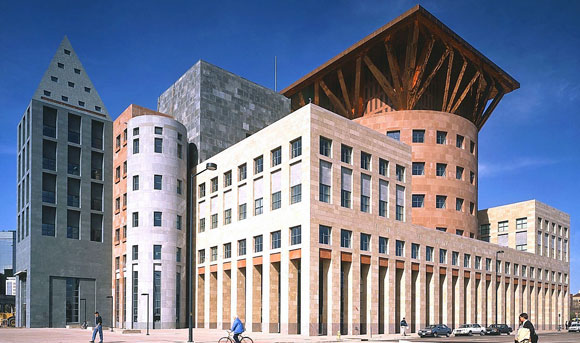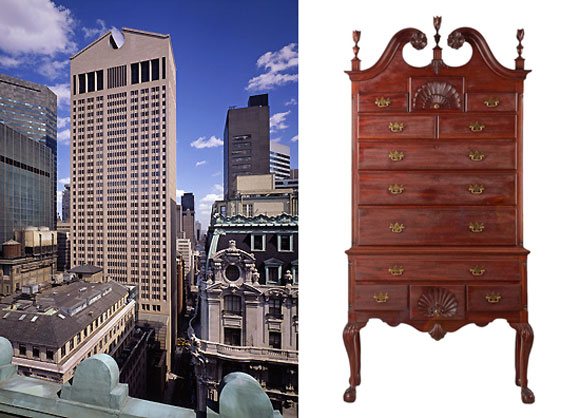#90: THOSE WERE THE DAYS: POST MODERNISM AND ROBERT A.M. STERN ARCHITECTS

Arata Isozaki’s iconic rendering that inspired an entire movement of architectural representation. Created for MOCA, Los Angeles, California
At the simple age of 24, I was employed by the world-famous Post Modern architect Robert A.M. Stern in New York City. Post Modernism, the architectural movement of the 1960s to the 1980s, may not be the most beloved style of design today and even many despise it. But Post Modernism does at times stutter a comeback in different forms.

In my undergraduate years of the 1980’s at UC Berkeley, we enthusiastically studied and exhaustively examined Post Modernism. It was the significant philosophy of art and architecture. This style, in the most elemental explanation, posits the notion that good architecture should provide human scale, harmony and beauty. Sounds obvious? Not always so.
Post Modernism, often called “Po-Mo,” reacted strongly against the many buildings of Modernism that preceded Post Modernism. Cold white boxes lacking life and a sense of place–these minimal Modern buildings of steel and glass appeared inhumane to some architects and most day to day users.
Post Modern architects connected their designs to visitors by offering the sense of feeling grounded—offering a building that was simply warm and inviting. The iconography of classical architecture, such as a Greek column or a Renaissance arch, created this grounding. Such traditional features captured what people thought buildings should look like.

Establishing the Po Mo movement as a 180-degree reversal from the evils of ice-y abstract Modernism, Post Modernists also added wit and charm. They did so through the use of vibrant colors, by making columns extra tall or extra fat, or by abstracting traditional forms into simple geometry, such as a triangle in lieu of a classical pediment. Though appearing to be merely a campy game of the visual arts, the movement added intellectual irony, rigorous research of historical precedence and proportions, and academic strategies of references.

In my early twenties, I was a smug, obnoxious young designer, which is a trait of plenty of new and naive architects. We believed even at our young age, that we had talents bestowed upon us that would certainly deliver world peace, or something idealistic and absurd like that.
Within Stern’s office of 100 of the best and brightest, I worked with defiance and sometimes too much confidence. Senior architects rolled their eyes in discomfort every time I made a statement of delusion and self-aggrandizing. I don’t know if it is our industry’s competitive style that causes this kind of behavior, or me just being an ill-advised juvenile architect. Maybe it was the Post Modern education that made me brash. After all, the Post Modernists boldly tossed aside the accomplishments of a previous generation, and replaced the old philosophies with new ideas that were forged through poking fun and having fun.

On my last day at the office in 1988, Robert Stern gave me words of advice as I was leaving to Cambridge to start my graduate studies. Bob, as he liked to be called, wished me luck with a grin, “Harvard won’t teach you anything about architecture, but they will teach a Californian like you how to dress appropriately.”
(Other essays on Post Modernism: Humor, Tribute to Michael Graves and Lecture on Love. )

